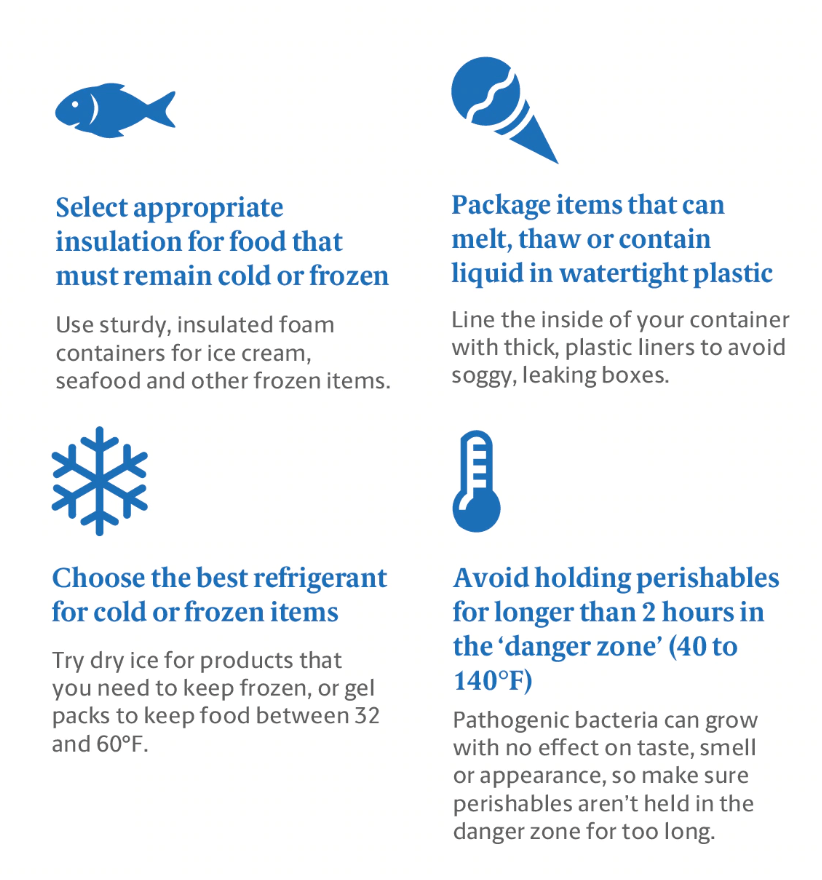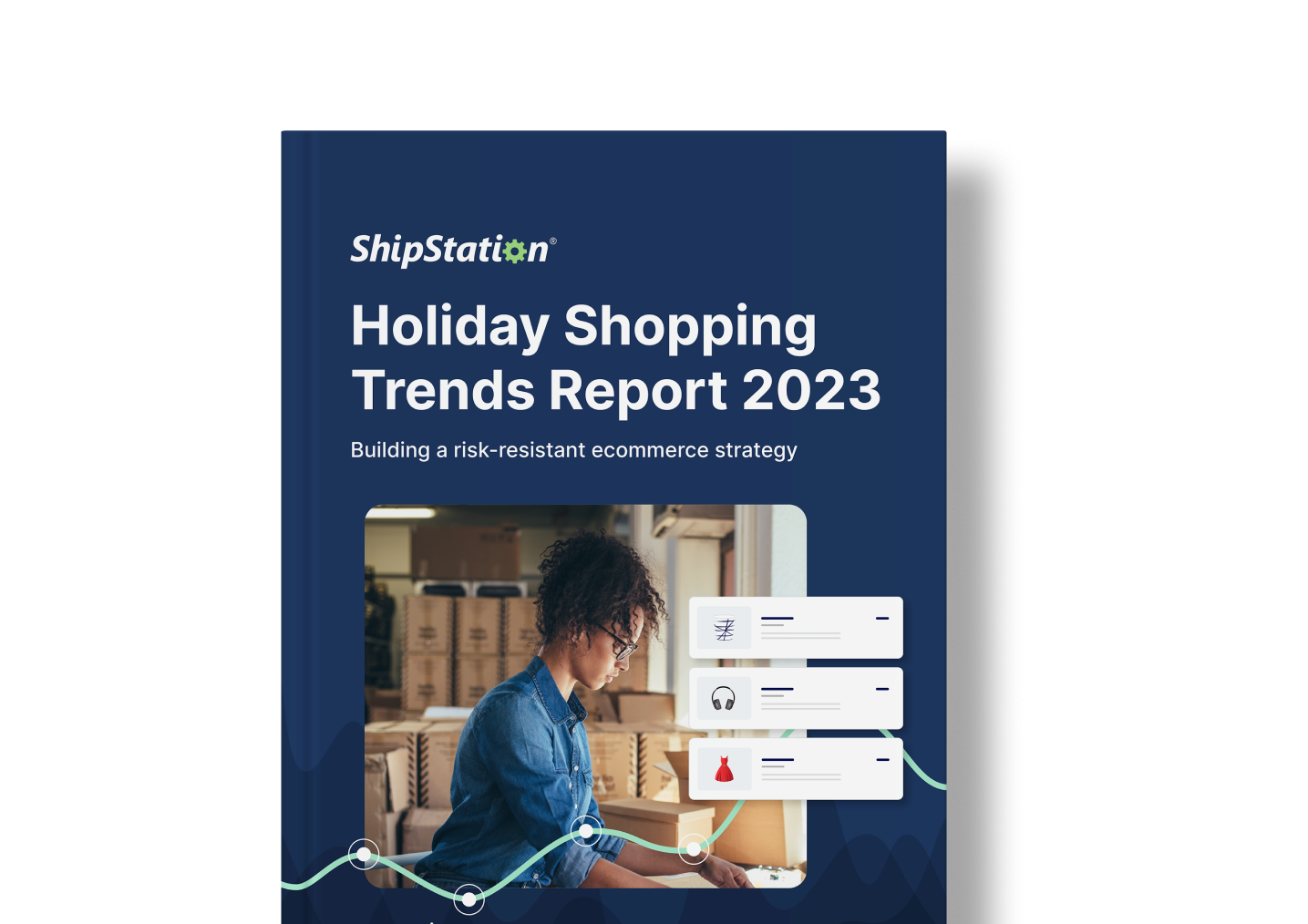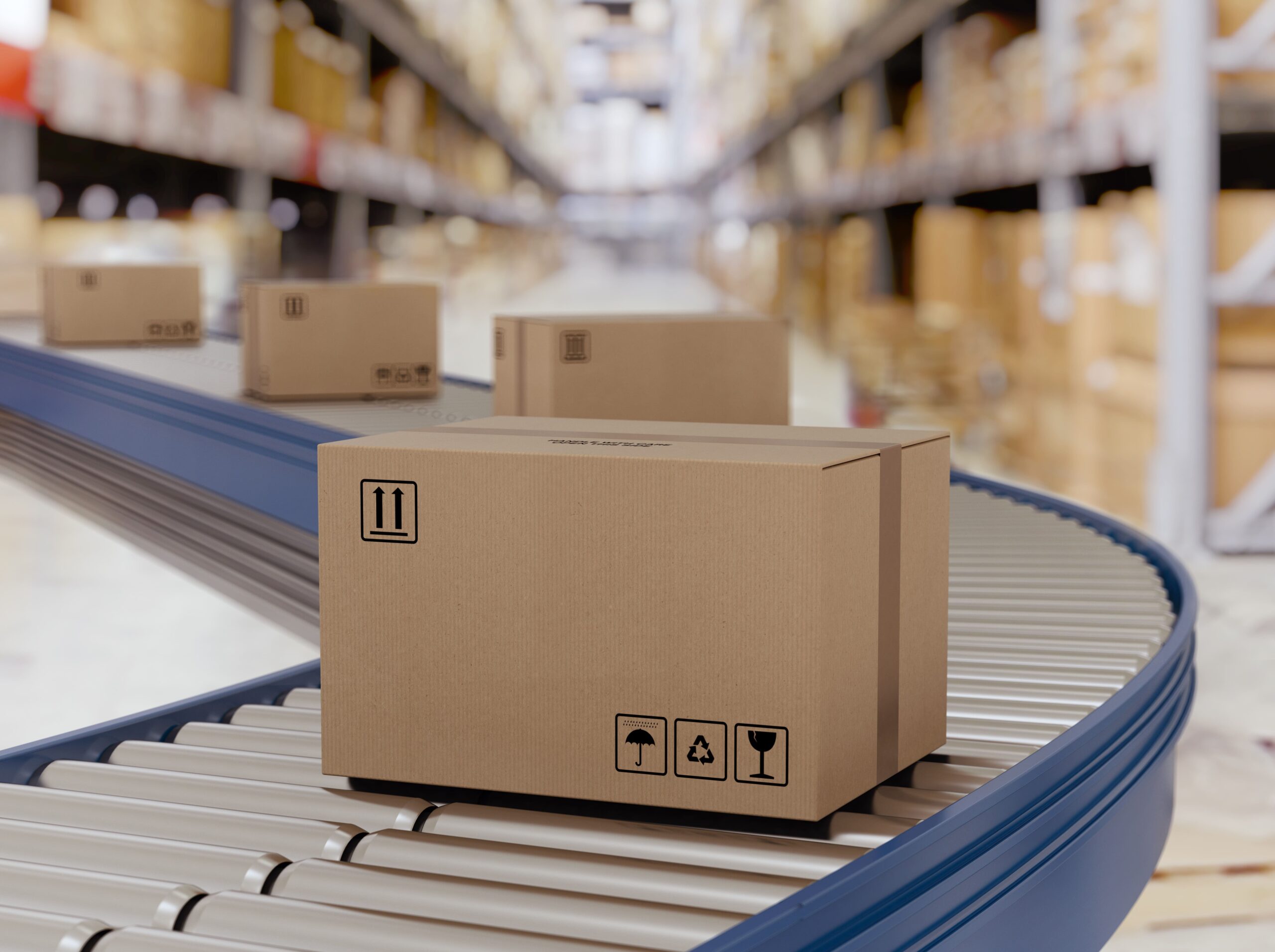How to Ship Food and Perishable Goods
The ecommerce market for food and grocery delivery continues to grow and become more accessible. However, finding ways to affordably and safely ship perishable items to consumers can be a challenge. Failing to do so not only causes chargebacks, but it can also be a health risk with expensive ramifications. Your business depends on goods arriving as fresh as the day they were caught or created. Follow these tips and guidelines for a safe and efficient shipping process:
Food Safety
When shipping perishable food, you’re up against a few challenges, such as extreme temperatures, humidity, staleness, or even spoilage. The keys to keeping food shipments fresh are insulation and refrigeration; keeping heat and moisture out and cool temperatures in. Here are a few options you can take to make shipping your foods easy.
Dry Ice: Dry ice allows you to ship frozen items and/or items that need to stay very cold. Dry ice is carbon dioxide in a solid form. Instead of thawing into a liquid, it converts directly into a gas from its solid state. Despite this advantage of dry ice, it’s also expensive and not allowed by all carriers.
While dry ice is necessary to ship frozen foods, there are very important things to consider in handling:
- It’s hazardous for air travel and must be carefully labeled to comply with transportation carrier regulations
- It can burn exposed skin and cause injury, and therefore must be handled with gloves and goggles
- Though it’s non-toxic, it releases CO2 gas as it warms, causing a risk to health in enclosed or non-ventilated spaces
- Do not use when shipping live animals such as lobsters or other shellfish
- Requires you to select the shipping option “Contains dry ice” for FedEx and UPS.
- USPS doesn’t require marking the package with “Contains dry ice” but does have guidelines and requirements
Before using dry ice, contact your dry ice supplier and shipping carrier to determine how to best handle shipments that contain dry ice.
Cold Packs: Cold packs are reusable inserts that are used to ship refrigerated perishable and semi-perishable food. There are many options for cold packs that are selected based on the type of and amount of food you’re shipping, the temperature it’s regulated at, the temperatures it will be shipped at, and how long it needs to stay cold.
As a general rule, pliable gel cold packs are useful for irregular spaces since they can be reshaped. Plastic or foam cold packs are more suitable for well-defined surfaces. When planning to use ice packs or freezer packs, test out the size and number of packs your particular product needs to arrive at the locations your service covers.

Packaging Considerations
Glass: Glass is a great packaging material for food items. The disadvantage is that glass is more expensive, heavier, and more expensive to transport. Glass also requires special packing since it’s fragile. Glass should be bubble-wrapped to withstand mild-to-moderate impacts and shipped in a sturdy shipping container. If the contents of the glass are liquid, the product should also be placed in watertight plastic bags, and the inside of the box should be lined with a plastic liner. If your contents spill, it can not only cause your package to be undeliverable, it can be a costly accident that damages other parcels as well.
Plastic Bags or Wrappings: The least expensive way to transport food products is in flexible plastic bags. Depending on how it’s packaged, this is also the method that’s most resilient to impact. Other packaging materials can become dented or crushed on their corners, but plastic bags can be packed and secured in a shipping box and absorb shock evenly. Keep in mind that this method is most effective for solid food items. Consider looking into biodegradable plastics or more eco-friendly options.
Shipping Containers: When shipping perishable or semi-perishable food, you will likely choose between a standard cardboard box with an insulated liner or a foam/rigid plastic box if the cooling needs justify the extra cost.
If you choose a box with an insulated liner, you will need to choose the appropriate amount of insulation.
- 1 inch of insulation typically regulates temperature for a shipping time of 1-2 days
- The thickness of the insulation can extend this time for up to 5 days
If your product doesn’t require as much cooling, you can explore more cost-effective types of insulation such as air-filled liners or Styrofoam cut-sheets.
Learn how ShipStation user Harmony Harvest ships flowers in our new podcast, Get Ship Done.
Shipping
To ship perishable goods, express shipping is likely the best option. Express shipping may feel out of reach for many small to medium sized businesses, but there are some tips you can use to make it a reality. With a good fulfillment process, same-day shipping can be a practical option for customers that order by a certain time of day. Here are some ways you can use ShipStation to help manage express and same-day shipments:
New Order Alerts
- Catch same-day shipping orders right away with new order alerts. Set up order alerts to be notified when a new order comes in or is ready to ship.
Batch Shipping
- Batch shipping is one of the best ways to save time during the shipping process. Instead of printing labels individually for each order, use batch shipping to create and print labels in bulk. You can group express shipping orders together and use automation rules to help quickly assign package types and carrier specifications. Once your orders are ready to go, batch shipping allows you to print labels for all of these orders at the same time.
For non-perishable food items, standard ground shipping is a good option for customers who want low shipping costs. Every carrier has different restrictions and pricing around shipping perishable goods.
Carrier Options
- FedEx: FedEx has multiple options for shipping perishable goods, including custom temperature-controlled services
- USPS: USPS does not offer refrigerated services, but allows dry ice and other cooling agents for specific shipment types
- UPS: UPS offers multiple express shipping options to accommodate for time-sensitive perishable shipments
From extreme temperatures to humidity, there’s no shortage of challenges when you’re shipping food and perishable goods. If you’re in the business of selling food online, timeliness and safety of the shipping process should be top-of-mind. As a reminder, make sure you keep heat and moisture out and cool temperatures in when shipping. Ensuring your customers receive their packages quickly and in good condition can boost your brand credibility and create loyal customers.
Seller-Side Delivery Options
Shipping food can be expensive. If your items are perishable, express services can lead to abandoned carts or you paying far more than need be for shipping. And since food can already be tough on profit margins, making sure you keep costs as calibrated as possible is important. ShipStation now offers BigCommerce and Shopify sellers the chance to include live shipping rates to customers in checkout. You can also adjust this rate so you or your customers pay more depending on what the situation dictates. Taking another manual step out of the order process is a shortcut for everyone. Click here to find out more.






